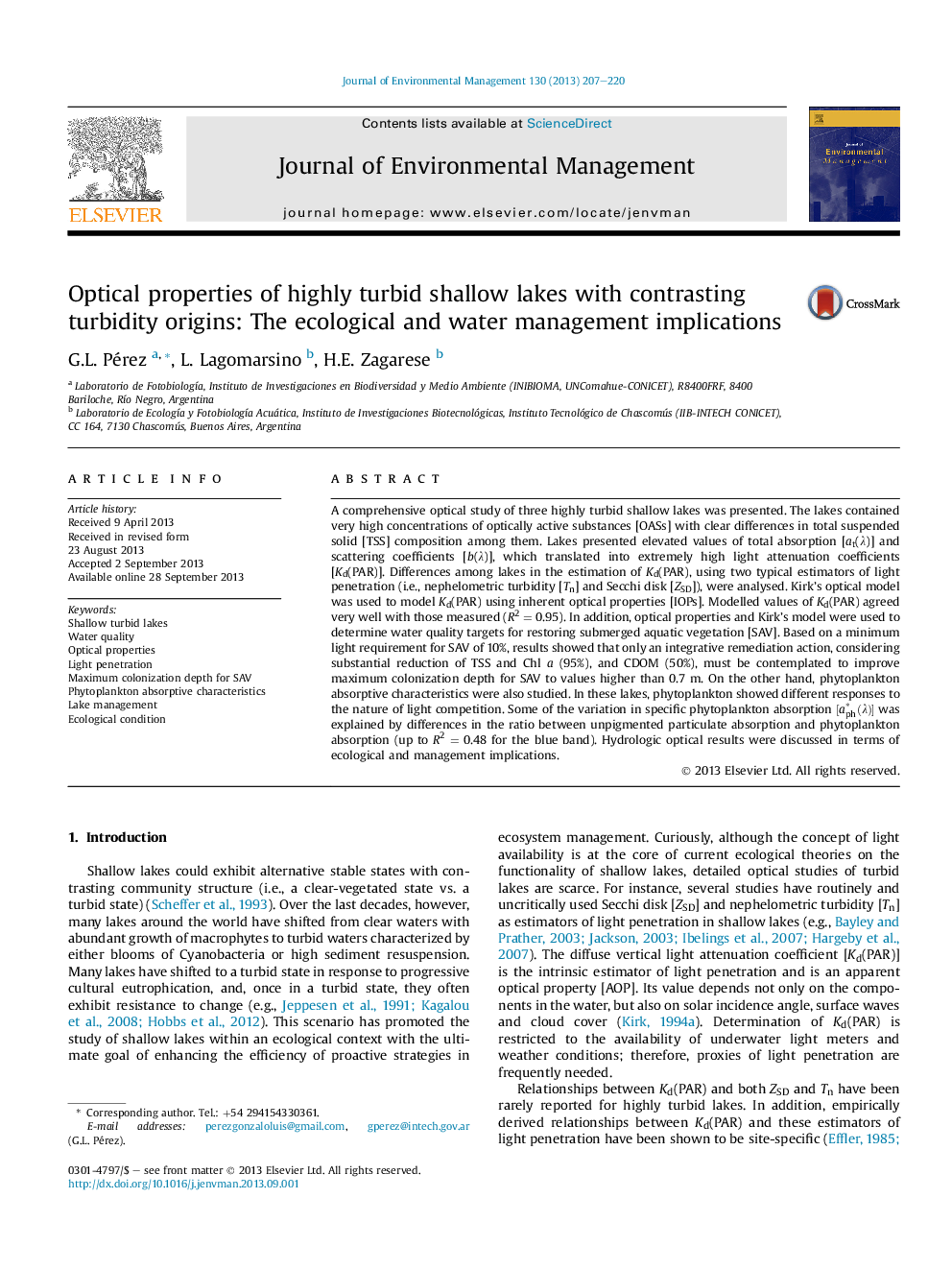| کد مقاله | کد نشریه | سال انتشار | مقاله انگلیسی | نسخه تمام متن |
|---|---|---|---|---|
| 1056089 | 1485282 | 2013 | 14 صفحه PDF | دانلود رایگان |

• We present a comprehensive optical study of three highly turbid shallow lakes.
• Typical estimators of transparency (Tn and Sd) elicited differences between lakes.
• Modelled values of Kd(PAR) agreed very well with measured ones.
• Kirk's model was used to determinate water quality targets for restoring SAV.
• We also describe phytoplankton absorptive features through contrasting turbidity.
A comprehensive optical study of three highly turbid shallow lakes was presented. The lakes contained very high concentrations of optically active substances [OASs] with clear differences in total suspended solid [TSS] composition among them. Lakes presented elevated values of total absorption [at(λ)] and scattering coefficients [b(λ)], which translated into extremely high light attenuation coefficients [Kd(PAR)]. Differences among lakes in the estimation of Kd(PAR), using two typical estimators of light penetration (i.e., nephelometric turbidity [Tn] and Secchi disk [ZSD]), were analysed. Kirk's optical model was used to model Kd(PAR) using inherent optical properties [IOPs]. Modelled values of Kd(PAR) agreed very well with those measured (R2 = 0.95). In addition, optical properties and Kirk's model were used to determine water quality targets for restoring submerged aquatic vegetation [SAV]. Based on a minimum light requirement for SAV of 10%, results showed that only an integrative remediation action, considering substantial reduction of TSS and Chl a (95%), and CDOM (50%), must be contemplated to improve maximum colonization depth for SAV to values higher than 0.7 m. On the other hand, phytoplankton absorptive characteristics were also studied. In these lakes, phytoplankton showed different responses to the nature of light competition. Some of the variation in specific phytoplankton absorption [aph∗(λ)] was explained by differences in the ratio between unpigmented particulate absorption and phytoplankton absorption (up to R2 = 0.48 for the blue band). Hydrologic optical results were discussed in terms of ecological and management implications.
Journal: Journal of Environmental Management - Volume 130, 30 November 2013, Pages 207–220